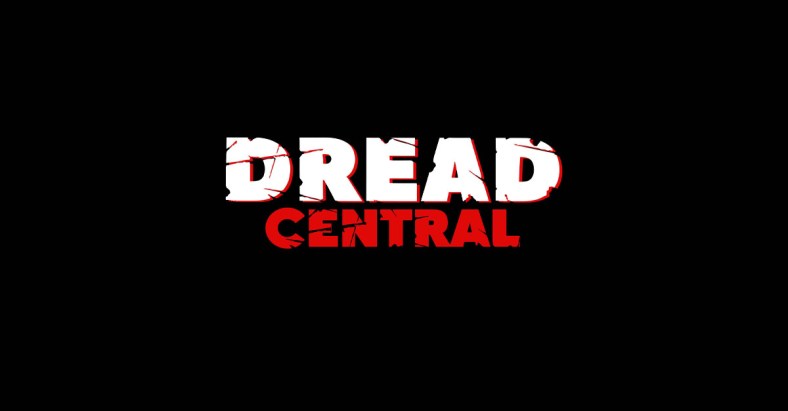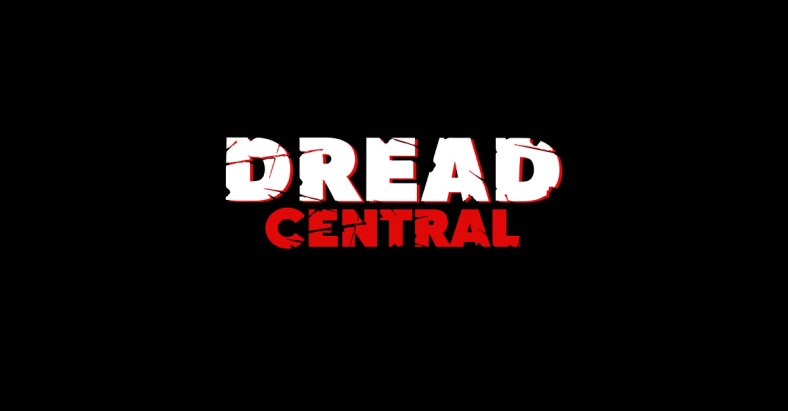Interview: André Øvredal Dissects The Autopsy of Jane Doe

The Autopsy of Jane Doe (review), Norwegian director André Øvredal’s (Trollhunter) English-language debut is, at least in my book, the most original and chilling film of the year, having shocked and (pleasantly) surprised festivalgoers around the world since it first debuted at TIFF in September.
Set almost exclusively in the confines of an autopsy room in the basement of a family home, small-town Virginia father-and-son coroners (Brian Cox and Emile Hirsch) find themselves thrown into a whole world of fear when the police request their urgent services to perform an autopsy on a young Jane Doe found partially buried in the basement at a gruesome crime scene.
Shocked by the extent of the woman’s internal injuries – given the fact she shows no external signs of trauma – the siblings become progressively spooked as they discover increasingly bizarre clues that hold the key to their patient’s terrifying secrets.
To celebrate the film’s impending theatrical release in select theaters on December 21st (preceded one day earlier by a VOD release on December 20th), Dread scrubbed up with Øvredal in an attempt to extirpate Jane Doe’s ominous secret(s)…

Dread Central: Further to the success of Trollhunter, the scripts that started reaching your desk pretty much all fell in a similar realm. You were keen to follow up with something that didn’t stray too far from this sub-genre that people had started to associate you with but then you saw The Conjuring and everything changed.
André Øvredal: Absolutely right. I was working on a few movies then with some really big Hollywood producers but they never came through. There was one particular movie that I really hoped to be able to do which was called Carpe Demon. Christopher Columbus wrote that script and he was also the producer and it was just such a fun demon comedy/action movie – very much like all Columbus’ movies we love from the ’80s. It was so much fun but sadly, after spending two years on that, it didn’t work out.
And then, as you just said, I saw The Conjuring and it was such a classical horror movie that came at a time where all these movies had tried to do all kinds of different stuff and then suddenly it was like getting back to basics in a way. And it was just so well done and it contained some scenes that I was so floored by and, in my opinion, James Wan is the modern day Master of Horror. So I called my agency and told them that I wanted to find a pure horror script. A month passed by and along came Jane Doe and it was so scary and exactly the kind of concept I was interested in doing.

DC: It definitely has that classic supernatural shocker feel to it but it’s so different and, accordingly, so fascinating – something I thought the script and your direction pulled off amazingly well given the fact almost the entire story is told in a single location. What did you see in the script that clicked with you in terms of just how effective and chilling it could be?
AØ: It was the pacing and how we get to know these characters. I thought it was just such a very smart and mature script. There were no teenagers being chased around by a boogeyman and it was all very psychological and so well constructed – every scene had meaning and you could sense that it had been tweaked and tweaked to perfection. As a result, it was so easy for me to direct because everything was written there. Being totally honest, anyone could have directed it (laughs) because it was so well written. It really was just a case of putting the camera where the writers say you should (laughs). We did talk about some things that I thought we could tweak here and there but it wasn’t much and it was on The Black List in Hollywood and it was a big hit within the community. I was just lucky to be the director they chose and I’m equally impressed by the fact that they chose me based on Trollhunter which was SO different. I’m so grateful to the producers for taking that chance with me. It still feels like a miracle to me that Trollhunter became so popular outside of Norway (laughs) because it was such a local story and we literally wrote everything meant to please a Norwegian audience.
But Jane Doe is what I really love. With Trollhunter I had no choice for so many reasons. It was fun but The Autopsy of Jane Doe gave me the chance to be precise and do a movie in the way that I enjoy making films.
DC: Moving from Trollhunter, which was mostly shot in the great outdoors, to Jane Doe, which is almost entirely in such a confined space, must have brought its fair share of challenges with it.
AØ: I loved that fact. I NEVER saw the movie as claustrophobic. I suppose it does feel claustrophobic to a degree, but I had to avoid that otherwise it would just feel like a very small movie. I had to constantly keep expanding everything. We kept constructing the set so you never quite see the end of it and the angles and everything had to be constructed for each specific scene. That was the lucky part actually because I could construct the movie and the set based on the script rather than having to adapt the script to a specific location.
DC: Although we’re confined to the morgue, there are so many clearly intentional props and decorations there that help emote a particularly warm and homely atmosphere rather than a typical clinical environment.
AØ: Absolutely. We also kept adding lots of little elements here and there to remind the audience of the family warmth. To give you an example, we see this floral wallpaper inside the elevator. That’s pretty unnatural but I really wanted it there because I wanted to have this very important message in there about the mother and I wanted the audience to sense her presence by including things that had a feminine touch to them.

DC: You mentioned how honored you are to have been chosen to direct the film. I can’t begin to imagine how pleased you must have been once the leads signed on too. How involved were you during the casting process?
AØ: We discussed the casting with the producers and financiers. That’s the process: You create a list of your favorite actors that we all agree on and then we went to the number one on that list and that was Brian Cox eventually. And then we got super lucky when we sent the script to Emile Hirsch’s agents too.
DC: We also have the lead actress, who deserves so much credit, Olwen Kelly. You could have chosen to use a prosthetic dummy but you opted for an actress to play the corpse for as many scenes as was humanly possible.
AØ: It was very important to use a real actress. I wanted the audience to identify with a real human being who has been through something so terrible. You don’t really know what it is that’s happened but it’s clear that something horrific has happened to her. And I believe that you can’t really replicate a human being in those kind of close ups that we see in the movie. She was actually the first person I auditioned for the part.

DC: I’m intrigued as to how you have someone audition for a role as a cadaver.
AØ: Well Olwen read the script and we discussed it and she was excited and so relaxed about everything – including all the nudity and the process of how the film had to be made. She was amazing and she’s becoming a superstar in Ireland. I just read a huge article all about her just today.
DC: And then I wanted to talk to you about the autopsy procedure itself. It’s all as graphic as it could ever get but at the same time it never, at least for me, had me looking through my fingers or looking away. I felt that your choice of music played a very important role in toning down the gratuity to a certain extent. Was that one of your designs?
AØ: In a way. When we’re first introduced to the autopsy room, the rock music was used to surprise the audience and it helps to create a lot of energy and fun and games. And then you take the audience on this rollercoaster ride because the previous scene was very dark down in the basement where we find Jane. So it’s all about creating fun and games and then getting serious again. And all these shifts in tonalities are what excite me as a director as well: The challenge of being able to keep a consistent tone throughout the movie but still be able to inject those surprises that the audience doesn’t expect.
DC: We know there’s no Trollhunter remake on the cards, but could you see yourself directing a sequel maybe? Aside from that, I do know you have a film in the pipeline called Mortal. Can you tell us a little about what you have planned for us?
AØ: I don’t think we’ll ever do a Trollhunter sequel but it’s something a lot of people ask about and I do have conversations a few times a year with a producer: “Should we do it? Should we not?” I have to admit, I think I have a fear of touching the movie now. It’s a movie that’s beloved by a lot of people and one that I’m proud of so I don’t want to tarnish that reputation with a movie that I’m just making to make it. If I had an amazing idea for a sequel I would probably do it, but I have so many stories I want to tell and life is so short.
Coming to Mortal, that’s going to be a very expansive movie set in Norwegian nature. You’ll see action, a road movie and a love story. We were supposed to be shooting right now but had to postpone for a couple of months and we realized the winter was upon us so it was impossible to shoot in Norway because it’s just dark. Consequently, we’ll start shooting that one in March/April, 2017.
The Autopsy of Jane Doe arrives on VOD December 20th and opens in select theaters on December 21st, and we’ll leave you with the latest trailer courtesy of IFC Midnight.

Categorized:News

